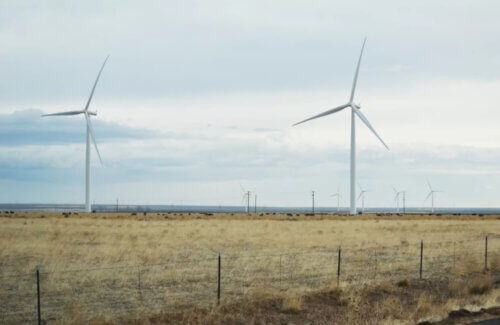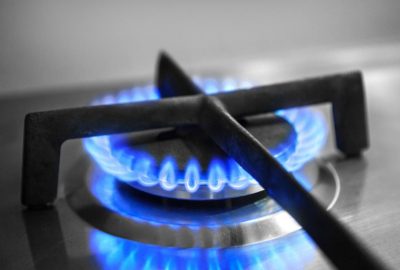
(Reuters) – U.S. natural gas futures climbed about 4% to a one-week high on Friday on forecasts for colder weather and higher heating demand over the next two weeks than previously expected and record flows of gas to liquefied natural gas (LNG) export plants.
That price increase came despite signs that the amount of gas curtailed by freezing wells, known in the energy industry as freeze-offs, was leveling off.
Front-month gas futures for February delivery on the New York Mercantile Exchange rose 12.9 cents, or 3.5%, to $3.830 per million British thermal units at 8:28 a.m. EST (1328 GMT), putting the contract on track for its highest close since Dec. 30 for a second day in a row.
For the week, the front-month was up about 14% after sliding about 11% over the past two weeks.
Analysts projected the next three storage reports for the weeks ending Jan. 10, 17 and 24 could each show utilities pulling over 200 billion cubic feet (bcf) of gas from inventories to meet soaring heating demand. Some analysts said withdrawals this month could top the current record high of 994 bcf set in January 2022, according to federal energy data.
Those storage withdrawals could wipe out the current surplus of gas in storage, which stands near 7% over the five-year average, by the end of January. That would be the first time stockpiles would fall below the five-year average since January 2022.
SUPPLY AND DEMAND
Financial firm LSEG said average gas output in the Lower 48 U.S. states slid to 102.6 billion cubic feet per day (bcfd) so far in January, down from 103.8 bcfd in December. That compares with a record 105.3 bcfd in December 2023.
Since daily output hit a 10-month high of 106.0 bcfd on Dec. 30, supplies were on track to drop by around 5.9 bcfd to a preliminary eight-week low of 100.1 bcfd on Friday. The amount of freeze-offs, however, were lower than the 6.2 bcfd projected on Thursday.
Cold weather output declines so far this year have been much smaller than previous winters. Freeze-offs cut gas output by around 16.5 bcfd from Jan. 8-16 in 2024, 19.4 bcfd from Dec. 21-24 in 2022, and 20.4 bcfd from Feb. 8-17 in 2021, according to LSEG data.
Meteorologists projected weather in the Lower 48 states would remain mostly colder than normal through Jan. 25, with the coldest days still to come.
LSEG forecast average gas demand in the Lower 48, including exports, would rise from 148.3 bcfd this week to 149.3 bcfd next week before easing to 147.0 bcfd in two weeks. The forecasts for this week and next were higher than LSEG’s outlook on Thursday.
On a daily basis, LSEG said total gas use so far this winter peaked at 158.8 bcfd on Jan. 8 and would reach 159.0 bcfd on Jan. 21, which would fall short of the daily record high of 168.4 bcfd on Jan. 16, 2024.
The amount of gas flowing to the eight big U.S. LNG export plants rose to an average of 15.0 bcfd so far in January, up from 14.4 bcfd in December. That compares with a monthly record high of 14.7 bcfd in December 2023.
On a daily basis, LNG feedgas was on track to climb from 15.3 bcfd on Thursday to a preliminary 15.5 bcfd on Friday as flows to Venture Global’s 2.6-bcfd Plaquemines plant under construction in Texas rise to a record 0.8 bcfd. That total feedgas would top the current daily record of 15.4 bcfd on Jan 6.
Reporting by Scott DiSavino; Editing by Sharon Singleton
Share This:
More News Articles











